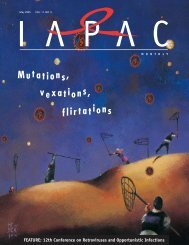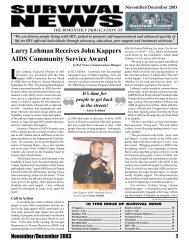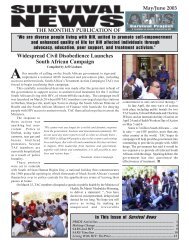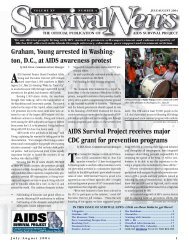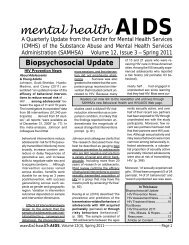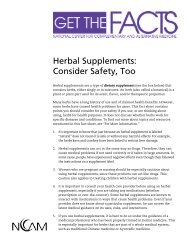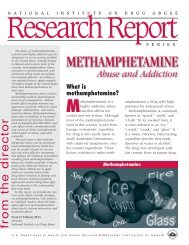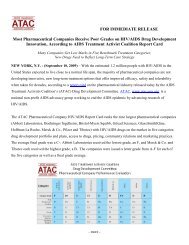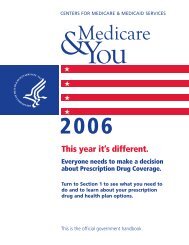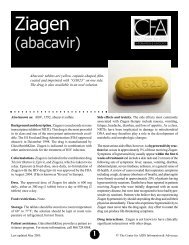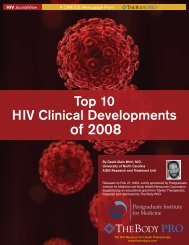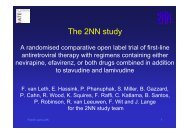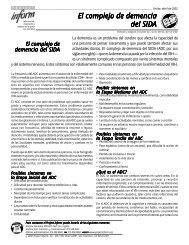Briefly - CD8 T cells - The Body
Briefly - CD8 T cells - The Body
Briefly - CD8 T cells - The Body
You also want an ePaper? Increase the reach of your titles
YUMPU automatically turns print PDFs into web optimized ePapers that Google loves.
prOgress thrOugh<br />
resiliency<br />
Syndemics, strengths, and<br />
HIV among Men who have<br />
Sex with Men (MSM)<br />
By amy herrICk, mary hawk,<br />
maCkey frIeDman, ChIngChe ChIu,<br />
James egan, mark frIeDman, anD<br />
ron sTall<br />
while imPRoVements in aPPRoaches to hiV PReVention<br />
have been made over the 30 years since the start of the AIDS epidemic,<br />
HIV among MSM is far from eradicated. Despite more than<br />
two decades of prevention efforts focused toward MSM, the rates<br />
of HIV infection in this population continue to rise.<br />
What is the state of the HIV/aIDS<br />
epidemic among men who have sex with<br />
men (MSM) in the U.S.?<br />
A 2008 report released by the Centers<br />
for Disease Control and Prevention (CDC)<br />
showed that MSM accounted for 46% of all<br />
new HIV infections and HIV infection rates<br />
among young MSM increased at a rate of<br />
about 12% each year between 2001 and<br />
2006. This report further noted that MSM<br />
were the only risk group who experienced<br />
an increase in infection rates during this<br />
time. In fact, according to a recent study by<br />
researchers at the University of Pittsburgh,<br />
even if the rate of HIV infection among<br />
MSM remains at the current level, by the<br />
time a group of young MSM (18 years old)<br />
reach the age of 40, 41% of them will be<br />
HIV-positive. We cannot make any progress<br />
in fighting the HIV/AIDS epidemic in the<br />
U.S. unless we find ways to lower rates of<br />
HIV transmission among MSM.<br />
How do other health disparities among<br />
MSM relate to risk for HIV/aIDS?<br />
A growing set of recent scientific papers<br />
had shown that health problems among<br />
MSM are interconnected and function as a<br />
group to increase HIV risk in this population.<br />
Because they are sexual minorities,<br />
gay, bisexual, and other MSM experience<br />
massive minority stress and social marginalization<br />
(for example, widespread<br />
bullying, gay-bashing, and other forms of<br />
violent harassment). Studies suggest that<br />
these negative experiences increase a person’s<br />
risk for multiple health issues, including<br />
depression, anxiety, drug use, and<br />
sexual risk behaviors. This process happens<br />
over time as people are exposed to<br />
discrimination and social marginalization.<br />
<strong>The</strong>se experiences cause stress to the individual,<br />
resulting in lowered self-esteem,<br />
increased emotional distress, and a sense<br />
of social isolation, all of which cause a<br />
person to be more vulnerable to serious<br />
emotional and physical health problems.<br />
According to the CDC, a syndemic<br />
is, “Two or more afflictions, interacting<br />
synergistically, contributing to excess<br />
34 | N O V E M B E R + D E C E M B E R 2 0 1 1 P O s i t i V E lyAwA R E . C O M



